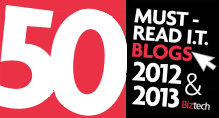Yesterday Samsung and Qualcomm announced competing smartwatch products. This is the opening salvo of many announcements from companies such as Google, Microsoft, and purportedly Apple. Smartwatches, the latest next big thing, bring some of the capabilities we have grown to love in our smartphones and place them conveniently our wrist. But do smartwatches really deserve to be called the next big thing?
We are quickly moving into an age where the information we need access to will be displayed seamlessly on any number of devices. Some of these displays will be big, such as monitors and TVs. Some will be small, such as smartwatches and phones, and others in between. However, the end display will only be important to the point that it will dictate how a user can practically interact with the information that is being displayed. If done properly, the end device and its operating system should fade seamlessly into the background and be inconsequential to the user.
Years of PC dominance have conditioned us to think of computing as a self-contained entity. Our use-cases were limited to our proximity to the office. I could do computing as long as I was in the confines of my office. We crawled out of the water and onto dry land with the advent of laptops and the Internet but still needed to retreat to the PC to sustain us. In the mobile age, we have left the pond but still act and think like we are caught in the muck. We dabble with computing across simultaneous devices, but have yet to fully exploit it.
Ultimately, all these devices are just little windows into what we need, want, and should be interacting with. They provide the opportunity for a continuous computing experience. Any one device should be on hand at our convenience to fit the way we want to interact. We should treat them as disposable terminals that should bend to our needs rather than the only means possible to access and interact with the information we need.
This is where casting a single device type as the next big thing is the wrong perspective. The trouble with focusing on a single device, such as smartwatches, is that you end up isolating the use cases rather than envisioning how each fits into a bigger ecosystem. You treat each device like a PC rather than a part of an always accessible whole. It potentially loses the perspective of figuring out how the device can actually improve the lives of the end users, rather than just create another kitschy gadget that ultimately creates more headache than it’s worth.
The next big thing isn’t going to be a device, but the use-case scenarios that these connected devices, be they phones, watches, glasses, tablets, car dashboards, or flexible display, bring to bear by working in concert with other technologies. The industry as a whole would do better to focus on the bigger picture rather than the form of how the information is delivered.
Case in point — when the ground began to shift under the music industry’s feet thanks to digital file compression and the Internet, the industry doubled down on locking in the status quo experience. They were only capable of thinking of the end user experience in terms of broadcasting — mass distribution via radio stations and CDs. But the world was quickly moving away from broadcasting toward narrow casting, and ultimately to on-demand. The consumer continued making an end run around the industry despite its best efforts. Apple’s iTunes eventually capitalized on this trend by marrying technology with capability, thus paving the way for new forms of experience.
Forward thinking companies are doing the same in mobile that Apple did with music. They are developing use cases that will tie all of these display options together. They are thinking about the interaction between individuals and these devices. This is the Internet of things meets mobile, meets big data, meets cloud, meets contextual computing. To win it’s going to have to be one big seamless ecosystem in the end. We need to adopt a fresh perspective on how we can continually be connected to our computing needs. Calling out a device type at the next big thing sets us back.
A watch is just a paltry component of a much bigger shift in capability that will involve devices, connectivity, data, context, and cloud. Devices are a small part. Looking at the device as the next big thing is akin to thinking that a flat screen television somehow improves upon the quality of shows and content that are viewed on it. While the announcement of an additional wrist screen is great for news cycles, it must be placed into context of the bigger shift in computing that is happening around it. As the famous Zen saying goes, the finger pointing at the moon not the moon. We’d do well to separate the window from the bigger picture.

